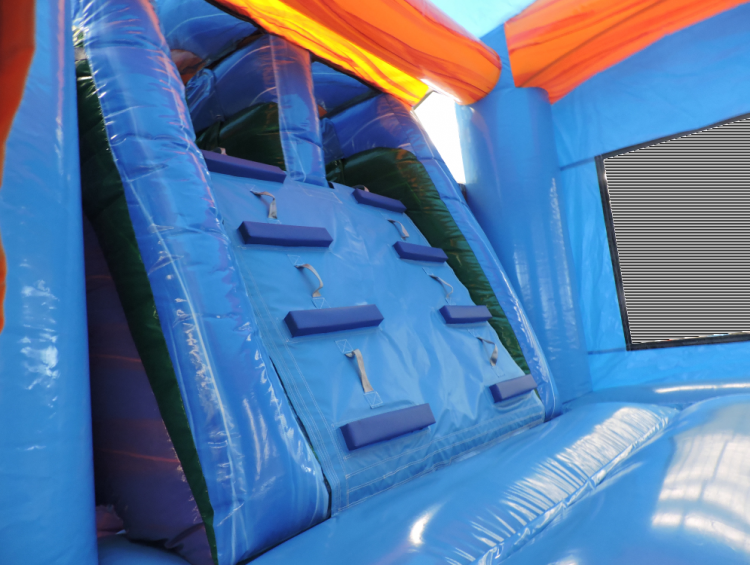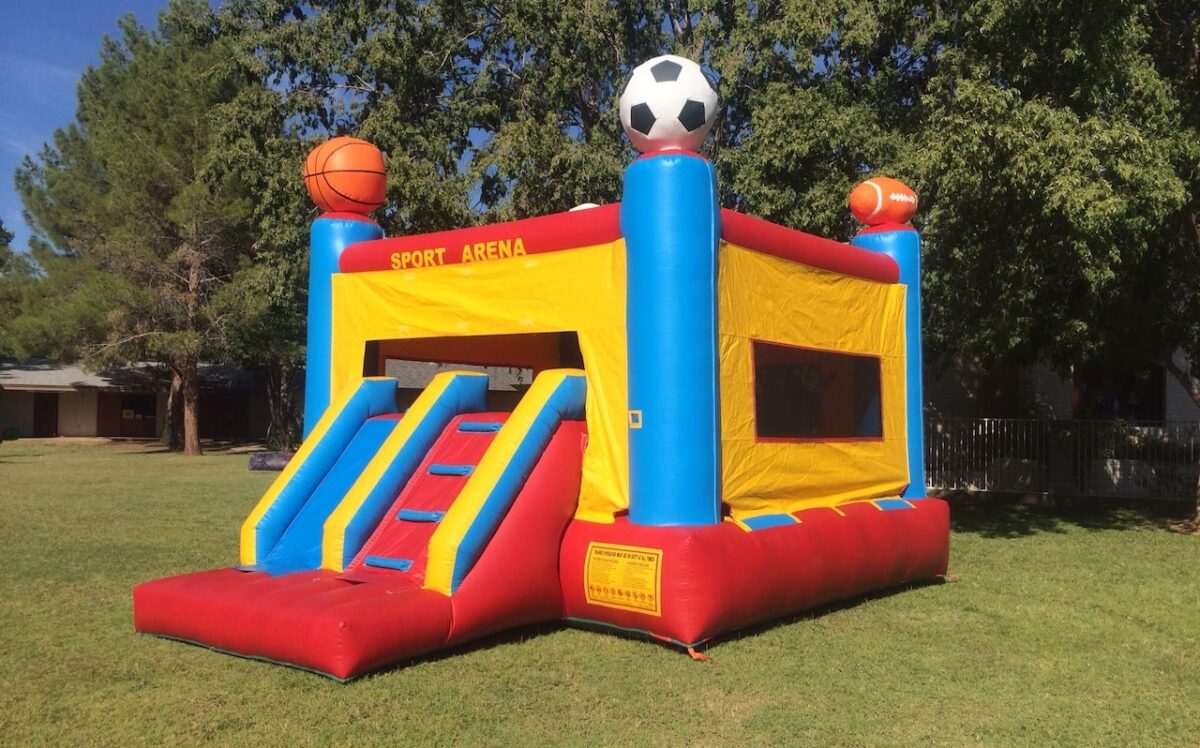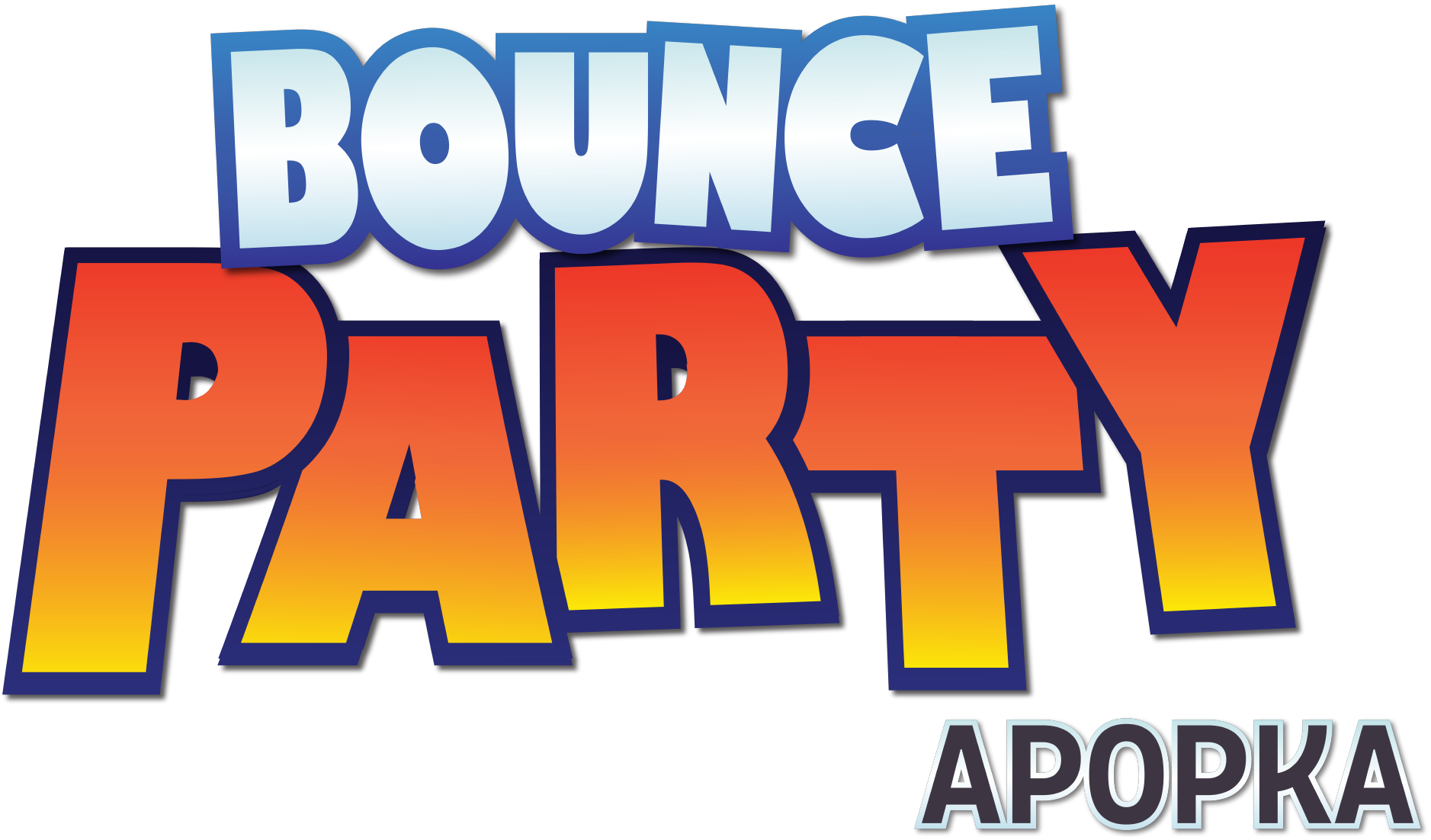Bounce houses, commonly known as inflatable castles, are a popular choice for children’s parties, school events, and outdoor gatherings. Their colorful, inflatable design offers hours of entertainment, but many parents wonder, are bounce houses safe? These inflatables may look harmless, but improper use or neglect can lead to accidents, especially with younger children, such as 2-year-olds or toddlers. This detailed guide will provide insights into what makes bounce houses safe, essential safety rules, and the risks you should be aware of as a parent or guardian. By understanding the guidelines, you can ensure that your child has fun while staying safe.


| Bounce House Safety Consideration | Why It’s Important | Tips for Parents |
| Inspect the Bounce House Regularly | Ensures the inflatable is free of damage or deflation risks | Check for tears, punctures, or weak seams before use |
| Limit the Number of Kids Inside | Prevents overcrowding and reduces the chance of collisions | Follow the manufacturer’s guidelines for capacity |
| Group Kids by Age and Size | Reduces the risk of injury from size and strength differences | Group children by similar age or size for safer play |
| Remove Shoes and Sharp Objects | Prevents injuries and damage to the bounce house | Have kids remove shoes, glasses, and jewelry before entering |
| Set Up on a Flat, Soft Surface | Minimizes injury risk from falls or bounce house movement | Choose a soft surface like grass or padded ground for setup |
| Supervise the Bounce House at All Times | Ensures rules are followed and risky behavior is prevented | Assign a responsible adult to monitor the bounce house constantly |
| Fix the Bounce House Properly | Prevents the inflatable from tipping over or moving | Make sure the bounce house is securely anchored using stakes or sandbags |
Are Bounce Houses Safe?
Bounce houses can be safe when used properly, but they do carry some risks if safety precautions are not followed. Adult supervision is essential to ensure children follow the rules and prevent accidents. It’s important to group children of similar ages and sizes to avoid serious injuries, as mixing kids of different sizes can lead to collisions. Proper setup is also crucial—bounce houses should be anchored securely on a flat, soft surface to prevent tipping or being lifted by wind. Weather conditions matter, too, as bounce houses should not be used in high winds or rainy weather to avoid accidents. Additionally, following the manufacturer’s weight limits and ensuring the bounce house is fully inflated can help prevent injuries.
What Makes Bounce Houses Safe?
Bounce houses are generally safe if properly used and maintained. However, their safety depends on various factors, such as the materials used, adherence to safety standards, proper setup, and adult supervision. Below, we explore these elements to help you understand why inflatable bounce houses can be considered safe.1. Materials Used in Bounce Houses
The quality of materials used in bounce houses plays a significant role in their safety. Most commercial bounce houses are made of heavy-duty vinyl or PVC, which is strong, flexible, and resistant to punctures. These materials are essential for ensuring that the inflatable bounce house can withstand repeated jumps and pressure from multiple kids playing simultaneously. Additionally, these inflatables often feature reinforced seams to prevent tears or air leaks that could lead to deflation during use. When choosing an inflatable bounce house, whether for purchase or renting a bounce house, always opt for one made with high-quality materials to prevent broken bones. Inferior products might use substandard materials that are prone to damage, leading to increased risks of accidents.2. Safety Standards and Certifications
Reputable manufacturers of bounce houses adhere to specific safety standards to ensure their products are safe for public and private use. In the U.S., for example, ASTM (American Society for Testing and Materials) sets standards for the design, manufacturing, and performance of inflatable bounce houses. ASTM standards require that bounce houses are durable, structurally sound, and safe for children of varying ages. Before renting or purchasing a bounce house, always check if the product is certified by recognized safety organizations. A certified bounce house will meet specific guidelines that minimize risks such as deflation, tearing, or excessive bouncing that could cause injury.3. Setup by Professionals
Even the best-made bounce houses can pose risks if not set up correctly. A properly installed bounce house is anchored securely to prevent movement or tipping, inflated to the correct pressure level, and positioned on a flat surface. The importance of secure anchoring cannot be overstated; bounce houses that are not adequately secured may collapse or, in rare cases, be lifted by strong winds. It is highly recommended that you hire professionals to install and secure bounce houses, especially for large events. Professionals know how to ensure the inflatable bounce house structure is safe for use, considering factors like the number of kids, the wind speed, and the ground surface.Importance of Supervision
Active adult supervision is crucial for bounce house safety. Even though bounce houses are designed to be safe, kids may still engage in risky behavior such as pushing, jumping on each other, or attempting flips. Without proper supervision, these actions can lead to injuries, particularly when there are children of different sizes or ages using the bounce house simultaneously. An adult supervisor should monitor the bounce house at all times, ensuring that the rules are followed, and the number of kids inside is kept under control. Immediate action should be taken if the bounce house begins to deflate, or if any risky behavior occurs.
Bounce House Safety Rules
While bounce houses are designed with safety in mind, adhering to specific safety rules is essential to keep kids safe. Here are the most important safety rules to follow:1. Inspect the Bounce House Regularly
Always check the bounce house for damage, weak spots, or tears before letting children play. Ensure that the inflatable is fully inflated and that the blower is working correctly. Any sign of deflation or damage means the bounce house should not be used until repaired. Regular inspections throughout the event will also help prevent accidents caused by sudden deflation.2. Limit the Number of Kids Inside
Overcrowding is one of the primary causes of injuries in bounce houses. Every bounce house has a manufacturer-recommended capacity based on the size of the structure and the weight of the children. Going beyond this limit raises the risk of collisions and falls, which can lead to bounce house injuries. Always follow the manufacturer’s guidelines for the maximum number of kids allowed inside at once. For events with many children, it’s a good idea to rotate groups, allowing each set of children a designated playtime using bounce houses. This will not only prevent overcrowding but also keep children safer and more comfortable inside the bounce house.3. Group Kids by Age and Size
Allowing kids of different sizes and ages to play together in a bounce house can lead to accidents. Older or larger children tend to bounce with more force, which can unintentionally knock smaller or younger kids over, increasing the risk of serious injuries. To avoid this, it’s best to group children by age and size when using the bounce house. If necessary, designate separate playtimes for different groups to minimize the risk of injury.4. Remove Shoes, Jewelry, and Sharp Objects
Children should remove their shoes, glasses, and any sharp objects before entering the bounce house. These items could lead to injuries or damage the inflatable material. Additionally, shoes can cause slips and falls inside the bounce house, leading to avoidable accidents. Have a designated area near the inflatable bounce house where children can safely store their belongings.
5. Set Up on a Flat, Soft Surface
The safety of the bounce house heavily depends on the surface it is set up on. Always set up on a flat, soft surface like grass, sand, or padded ground. Avoid hard surfaces such as concrete, which can cause severe injuries if a child falls out of the bounce house. Additionally, ensure there is enough clearance around the bounce house to prevent kids from colliding with fences, trees, or walls.
Conclusion
So, it’s crucial to monitor children to prevent bounce house injuries. are bounce houses safe? The answer is yes, but only if proper precautions are taken. Bounce houses can provide a fun and safe environment for kids, but safety is not guaranteed without the right setup, supervision, and adherence to safety rules. By using high-quality inflatables, ensuring professional setup, and actively supervising the children, you can minimize the risks and maximize the enjoyment. With proper attention, inflatable bounce houses can be safe for toddlers and younger children, reducing the chances of concussion and other injuries. However, extra care should be taken to ensure they are not overcrowded and that age-appropriate inflatables are used.We offer bounce house rentals in Apopka, Orlando, Altamonte Springs, Maitland, Tavares, Longwood, Mount Dora, and many more cities in Florida. Contact us now to get the estimate.
FAQs
1. Are bounce houses safe for 2-year-olds?
Bounce houses can be safe for 2-year-olds as long as they are specifically designed for toddlers. These bounce houses feature lower walls, softer bounces, and are smaller in size, making them suitable for younger children. However, constant supervision is required to ensure their safety.
